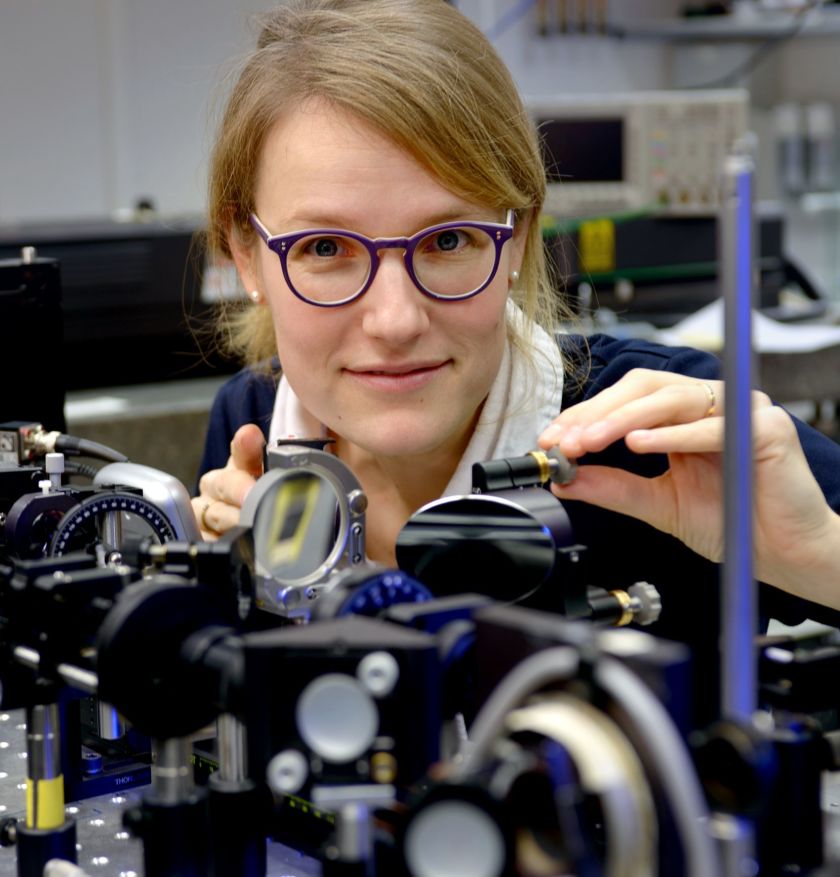Renske van der Veen heads new department "Atomic Dynamics in Light-Energy Conversion"

Renske van der Veen has a lot of experience with ultrafast x-ray measurements. © Irene Böttcher-Gajweski/MPIBC
From June 2021, Dr. Renske van der Veen is setting up a new research group at HZB. The chemist is an expert in time-resolved X-ray spectroscopy and electron microscopy and studies catalytic processes that enable the conversion of solar energy into chemical energy.
Dr. Renske van der Veen successfully obtained a Helmholtz Funding of first-time professorial appointments of excellent women scientists (W2/W3), whereupon the HZB has already initiated an S-W2 appointment procedure at TU Berlin. She has 14 years of experience in the field of ultrafast X-ray methods. "At BESSY II, I can apply and expand this experience in my research project," says van der Veen, emphasising, "The results could also contribute to the scientific case for BESSY III."
Renske van der Veen studied at ETH Zurich, received her PhD from the École Polytechnique Fédérale de Lausanne (EPFL) and conducted research at the California Institute of Technology, the Max Planck Institute for Biophysical Chemistry in Göttingen, and the University of Illinois, where she held an assistant professorship. Her research was honoured with the Sofja Kovalevskaja Award of the Alexander von Humboldt Foundation and the Packard Fellowship for Science and Engineering.
At HZB, Renske van der Veen is now looking forward to exchange with research groups working on related topics, from modelling ultrafast energy transfer, developing ultrafast techniques at BESSY II, to developing photoelectrodes and heterogeneous photocatalysts at the Institute for Solar Fuels.
arö
https://www.helmholtz-berlin.de/pubbin/news_seite?nid=22883;sprache=en
- Copy link
-
The twisted nanotubes that tell a story
In collaboration with scientists in Germany, EPFL researchers have demonstrated that the spiral geometry of tiny, twisted magnetic tubes can be leveraged to transmit data based on quasiparticles called magnons, rather than electrons.
-
Ernst Eckhard Koch Prize and Innovation Award on Synchrotron Radiation 2025
At the 27th BESSY@HZB User Meeting, the Friends of HZB honoured the dissertation of Dr Enggar Pramanto Wibowo (Friedrich-Alexander University Erlangen-Nuremberg). The Innovation Award on Synchrotron Radiation 2025 went to Prof. Tim Salditt (Georg-August-University Göttingen) and Professors Danny D. Jonigk and Maximilian Ackermann (both, University Hospital of RWTH Aachen University).
-
Bright prospects for tin perovskite solar cells
Perovskite solar cells are widely regarded as the next generation photovoltaic technology. However, they are not yet stable enough in the long term for widespread commercial use. One reason for this is migrating ions, which cause degradation of the semiconducting material over time. A team from HZB and the University of Potsdam has now investigated the ion density in four different, widely used perovskite compounds and discovered significant differences. Tin perovskite semiconductors produced with an alternative solvent had a particular low ion density — only one tenth that of lead perovskite semiconductors. This suggests that tin-based perovskites could be used to make solar cells that are not only really environmentally friendly but also very stable.
